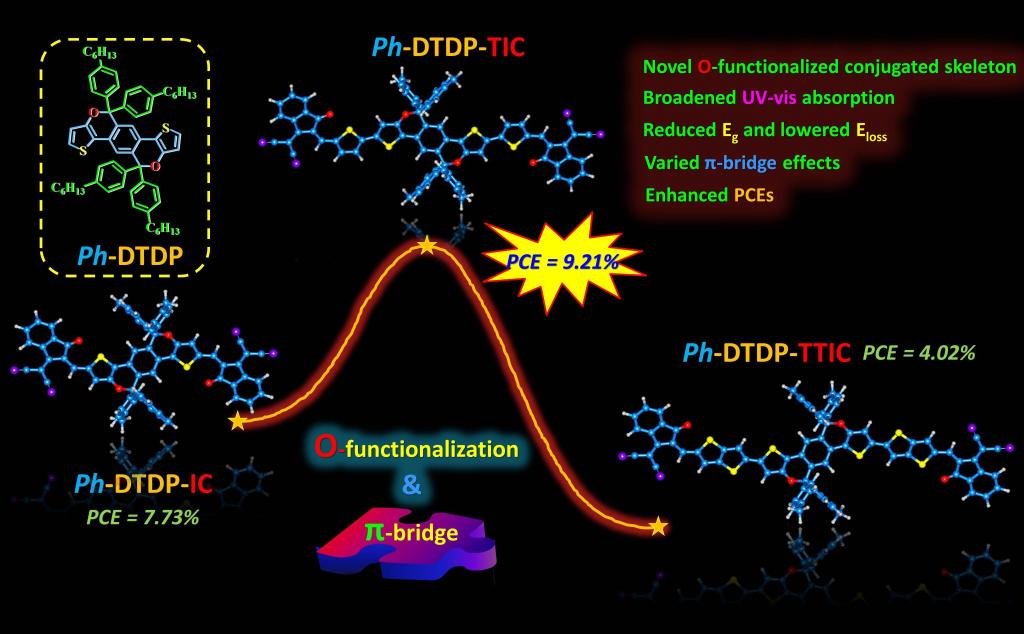
The fullerene derivatives were commonly used as acceptor materials in traditional organic solar cells. However, fullerene derivatives usually cost expensive, exhibit limited energy level variability and weak absorption in the visible, and restrict in the large-scale use. Polymer solar cells (PSCs) based on fused nonfullerene acceptors (NFAs) have aroused intensive interest due to the tunable energy levels, adjustable light absorption, and regulated solid aggregation properties induced by the synthetic flexibility for the NFAs. Research Group for Organic Functional Materials devotes to design and research the materials of new-type pyran. Incorporation of oxygen atom could efficiently increase the electron donating ability, reduce the band gaps and extend the absorption spectra. After the ladder-type aromatic fused rings dipyran (DTDP) building unit (Nano Energy 2018, 45, 10-20) was designed by the researchers, the introduced benzenyl side chains which have large steric barrier and change the regulation of π bridges to effectively avoid the phenomenon of open circuit voltage reduction which caused by incorporation of oxygen atom recently. After device optimization, this type of molecule exhibited low energy loss Eloss (0.57 eV) and excellent photoelectric conversion efficiency (PCE = 9.21 %). And related research was published in Adv. Funct. Mater., 2018, 28, 1705927. (SCI Q1, IF = 12.124).
Associate Professor Jinsheng Song, Professor Hua Wang of Henan University, and Professor Zhishan Bo of Beijing Normal University are the corresponding authors of the research. Lisi Yang, who is the master candidate, is the first author. The study was funded by the National Foundation Committee Joint Fund (U1704137), the Youth Science Fund (21404031) and the Program of Henan Provincial for Yooug Teachers.